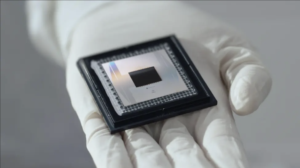Google Simultaneously Unveils And Doesn’t Unveil Quantum Chip

Latest news
-
Max Profit - July 11, 2025
-
Ima Short - July 9, 2025
Elon’s AI ‘Grok’ Goes Full Nazi To The Suprise Of No One
-
Max Profit - July 8, 2025
Jack Dorsey Unveils ‘Bitchat’, Musk Already In Talks To Buy And Rename It ‘XChat’
-
Pen Smith - July 7, 2025
Elon Starts America Party, Trump Forms South Africa Party In Retaliation
This week Google announced, ‘Willow’, the most powerful quantum chip ever developed. At the same time, however, Google did not announce any such chip and there is no evidence of ‘Willow’ ever existing. Further observation will be required.
Quantum computers use the mysterious mechanics of the smallest particles to solve complex equations. Google claims Willow is the best one yet and can solve problems that a normal computer would take 10,000,000,000,000,000,000,000,000 years to crack. But also, it can’t and none of this happened.
The only catch with Willow is that it only works when users are not looking at it, much like an office printer. Otherwise, the chip remains in a quantum state of superposition between existing and not existing, working and not working, like my cousin Denny who is staying on my couch at the moment.
Experts say this is the future of technology but I’m uncertain.
Google is calling Willow a quantum chip but it’s way bigger than a quantum particle the goddamn liars. The processor itself is about palm-sized and in order to avoid interference the chip must be supercooled in a massive machine that hangs from the ceiling like a giant golden chandelier. The whole thing is huge and really not very quantum at all so I’m not sure what they’re on about. It looks really cool but of course, you can’t see it because if you look at it it won’t work.
Willow is and isn’t primarily experimental so we won’t be seeing it in our phones and homes any time soon. But again, please, please don’t look at it.
Critics of the technology are worried that researchers, future users, and anyone who comes into contact with the chip might become quantum-entangled with its wave function and enter a state of superposition, permanently caught in a limbo between existence and non-existence, life and death, reality and unreality, never to escape for all of time. …I’d like to see an Intel chip do that.
Google has yet to confirm or deny whether any cats were harmed in the making of the chip.
Latest news
-
Max Profit - July 11, 2025
Kellogg Stocks Soar 5% Ahead Of Ferrero Takeover, Nutella Cornflakes Announced
-
Ima Short - July 9, 2025
Elon’s AI ‘Grok’ Goes Full Nazi To The Suprise Of No One
-
Max Profit - July 8, 2025
Jack Dorsey Unveils ‘Bitchat’, Musk Already In Talks To Buy And Rename It ‘XChat’
-
Pen Smith - July 7, 2025
Elon Starts America Party, Trump Forms South Africa Party In Retaliation





























